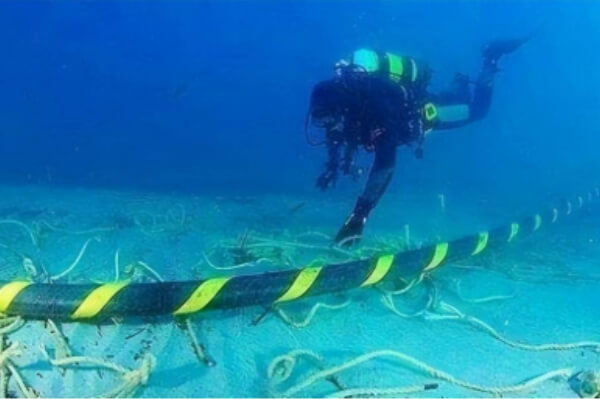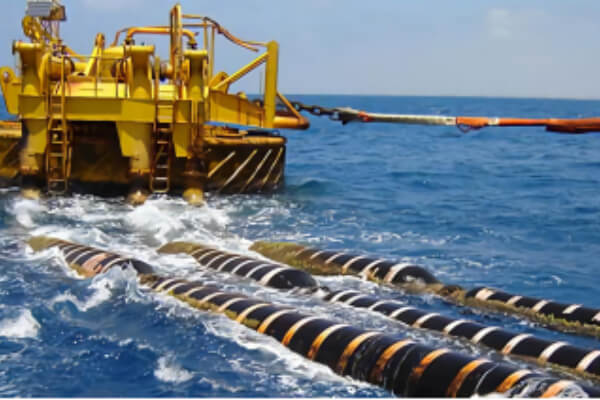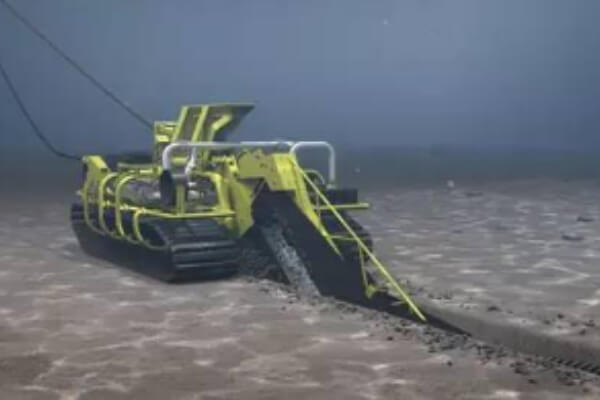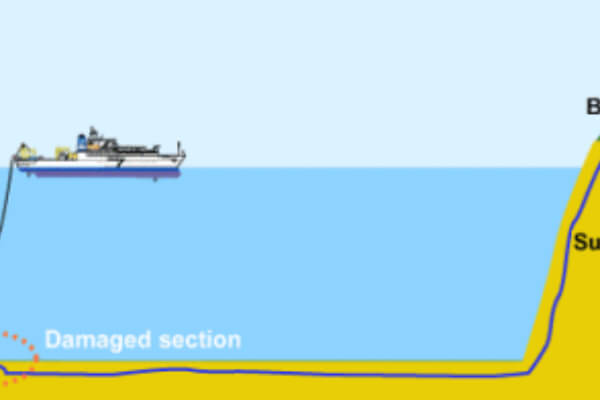What are fiber optic cables used for? ?
Submarine cables are divided into submarine communication cables and submarine power cables. Fiber optic submarine communications cables are primarily used for communications services and are often found in long distance communications networks. Typically used for larger occasions such as long distances between islands and military installations across the sea. Underwater communications cables are expensive but provide a high degree of privacy. One kilometer of submarine fiber optic cable will cost approximately 16520400 euros and could reach 190 620 000 euros.

Submarine electric cable is mainly used for underwater transmission of high-power electric power. Their role is the same as that of underground electrical cables, but the application of the occasion and the pose differ. The laying distance of underwater power cable is shorter than that of communication cable. They are mainly used between land islands, to cross rivers or ports, to connect drilling platforms from land or to interconnect drilling platforms.
How are submarine fiber optic cables laid? ?
The functioning of modern society increasingly depends on the support of communication technologies. The Red Sea crisis posed great challenges to global communication, and the laying and repair of submarine optical fiber cables has become the most worrying issue at present.
Laying submarine fiber optic cables is a complex process and a long-term project. It can be divided into three main stages : the study and cleaning of the cable route, laying submarine cables and protecting landfill.

Submarine fiber optic cables are usually made of several optical fibers wrapped in a circular protective layer. Submarine fiber optic cables are usually laid using a cable vessel, which is equipped with a variety of equipment for placing the submarine fiber optic cables from the ship to the seabed.
Bury the cable to protect it
Once the laying of the submarine optical cables is completed, it is necessary to bury optical cables in the seabed in order to protect the cables and prevent them from being damaged by waves, the currents, seafloor organisms, etc. An underwater sand chaser is generally used., which forms a trench on the seabed by spraying water at high pressure and buries the submarine fiber optic cable there.
Laying submarine cables requires a lot of labor and financial resources. It usually takes days, even weeks, to put them.

Maintenance of submarine cables
Even the strongest and best laid fiber optic cables can be damaged. Submarine cables can be damaged by a passing ship or by anchors touching the cables by mistake, by large fish which accidentally destroy the cable sheaths, by deliberate destruction by enemy forces or by natural disasters. In 2006, an earthquake disrupted numerous international submarine cables, preventing domestic users from accessing foreign websites.
Repairing fiber optic cables is more difficult than laying them. Fiber optic cables are buried hundreds of, even thousands of meters under the sea, with lengths ranging from a few tens of kilometers to tens of thousands of kilometers, and yet, even small damage can lead to cable paralysis. Find a faulty cable with a diameter less than 10 cm and repairing it over tens of thousands of kilometers of cable is like looking for a needle in a haystack, which is extremely difficult.

Repairing a faulty fiber optic cable under the sea involves the following steps :
First of all, a spread spectrum time-domain reflectometer is used to locate the approximate position of the faulty cable ; ensuite, a submersible robot is sent to find the exact location of the faulty cable and cut the faulty position.
Ensuite, the remaining ends were raised to the surface by a tugboat and towed to the repair vessel, where engineers connected the replacement fiber optic cable where it had been cut.
Finally, the cable has been tested as normal and the submarine cable has been successfully repaired and ready to return to the seabed.
Protective measures for submarine fiber optic cables
THE Submarine fiber optic cables are expensive and technically complex. To ensure the normal use of communications and electricity, work to protect submarine fiber optic cables is imminent.
Analysis of submarine cable damage statistics shows that the protection of submarine optical cables should be considered from several aspects, such as material selection, deployment, surveillance and guarding, in order to provide references to guarantee the safety of the installation and the stability of the operation of submarine energy cables.
Statistics on damage to underwater communications cables in the Atlantic Ocean
Selection of quality materials
During the design and manufacture of submarine cables, materials with high quality corrosion resistance properties should be chosen, to pressure and abrasion, to improve cable resistance to natural disasters and man-made damage.
Security deployment
When laying cables, it is necessary to take into account the characteristics of the marine environment, to avoid possible natural disasters and vessel fishing zones, and take appropriate protective measures, such as adding a protective layer or installing a protective net, to reduce the likelihood of accidents.
Surveillance
Use of advanced surveillance technology, real-time monitoring of the condition and operation of the cable through the implementation of a monitoring system, can detect cable damage and other problems in time, and carry out the necessary repairs to ensure the normal operation of the communications network.
